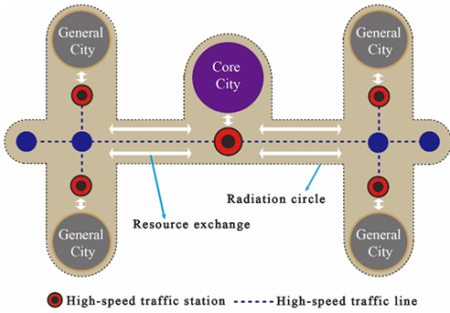
Transportation is an important driving factor in land use change. Most researches focus on the relationship between land use and transportation systems within a single city. There are few studies of regionally integrated transportation systems and overall land use patterns.
Recently, researchers from the Institute of Geographic Sciences and Natural Resources Research (IGSNRR) of the Chinese Academy of Sciences (CAS) revealed the spatial relationship of high-speed transportation construction and land-use efficiency and its mechanism in the Shandong Peninsula urban agglomeration. Their findings were published in Journal of Geographical Sciences.
They established an evaluation of high-speed transportation superiority degree, which included the high-speed transportation network, density, and axial radiation, to evaluate the high-speed transportation level and grade of 42 land-based county-level units. They also used a DEA model to calculate the land-use efficiency.
With the aid of GIS and scatter diagram, researchers combined land-use efficiency types with high-speed transportation types to analyze the spatial relationship between them. The results showed that taking the two major cities of Jinan and Qingdao as the hubs, the core surrounding counties present a significant spatial coordination between their land-use efficiency and high-speed transport superiority degree.
The study reveals that high-speed transportation has a positive relationship with land-use efficiency due to the mechanism of element agglomeration and endogenous growth.
This research was supported by the Major Program of National Natural Science Foundation of China.

The influence of high-speed transportation on resource allocation (Image by FANG Chuanglin's team)
|
|

86-10-68597521 (day)
86-10-68597289 (night)

52 Sanlihe Rd., Xicheng District,
Beijing, China (100864)

